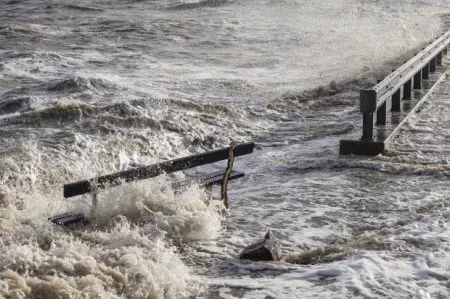
People generally like to be near the water, so it’s no surprise that many of the world’s largest cities are coastal cities. But as global temperatures, and therefore sea levels rise, many of those cities are becoming threatened by the very thing that attracted people there in the first place.
Sea levels are now climbing at nearly triple the rate they were climbing just 100 years ago, prompting coastal cities to become much more proactive in taking action to abate the effects of the rising water, according to the Financial Times. The work has taken on even more importance after natural disasters like Hurricane Sandy, which did more than $19 billion worth of damage in New York alone, destroying property that wasn’t even listed as a concern on flood maps.
Given studies that show every $1 worth of flood prevention can eliminate $4 worth of disaster recovery expenses later, New York’s $3.7 billion coastal protection plan may end up being a great investment. But the city isn’t alone in its preparation efforts.
Understanding the problem
Even though many coastal cities are heavily populated, they are continuing to grow. In many cases, that makes the preparation even more difficult. Rapid growth puts more people and valuable property in harm’s way, and gives less room for the water to go.
This is especially an issue in the low-lying Taihu Basin in China, where development had been going on without regard to the flooding risk. Before developing a plan, the government first needed to know how bad the flooding could get and what exactly was at risk.
Council Associate Partner CH2M HILL worked with the Taihu Basin government to assess the flooding risk now and how it might change over the next 50 years. Among other flood control efforts, the assessment resulted in better land use management policies.
CH2M HILL also worked with England and Wales National Flood Risk Assessment to collate and process a vast number of datasets to prepare modeling that provides a clearer view of the flooding risk in any given area.
Differing response strategies
One of the first cities to undertake a large project in response to rising sea levels was London, which built the Thames Barrier in 1982. The barrier, which is about a third-of-a-mile long, can block off the Thames River during storms to prevent tidal surges from inundating central London.
While there have been a number of years when the barrier wasn’t used at all, it has been closed 28 times since last December. Without the barrier, The Houses of Parliament, the O2 arena and Tower Bridge could have been flooded.
Other cities, such as Guangzhou, China, and Ho Chi Minh City, Vietnam, are working on projects to rapidly dissipate the flood waters. Both cities are involved in upgrading drainage and sewage lines and building facilities to temporarily store water safely during storms.
Melbourne, Australia, meanwhile, is working on retrofitting buildings in addition to working to completely offset its carbon emissions, believed to be one of the key causes of global warming.
Minimizing disruptions
During a major storm, it’s impossible to hold back all the water, which is why it’s important to prioritize and protect services that have the biggest impact. Power substations would be near the top of any city’s list.
Council Associate Partner Black & Veatch worked on seven power substations on the East Coast of the U.S., protecting them from storms even larger than Hurricane Sandy. It built storm walls and installed sump pumps and backup generators at the United Illuminating Company facilities. Those facilities also now have cameras so that operators can remotely monitor conditions at the substations and take action as necessary.
Hurricane Sandy struck during the middle of the efforts to modernize those substations. As a result of the upgrades, the facilities are now able to withstand floodwaters that are three feet higher than what was experienced during that super storm.
Related articles…
Video: Digital Delta transforms Dutch water system using big data
Smart cities researchers simulate human behavior during floods



